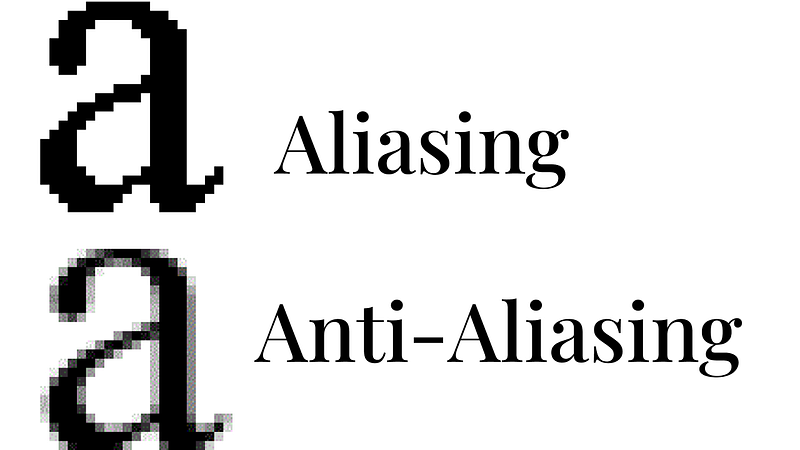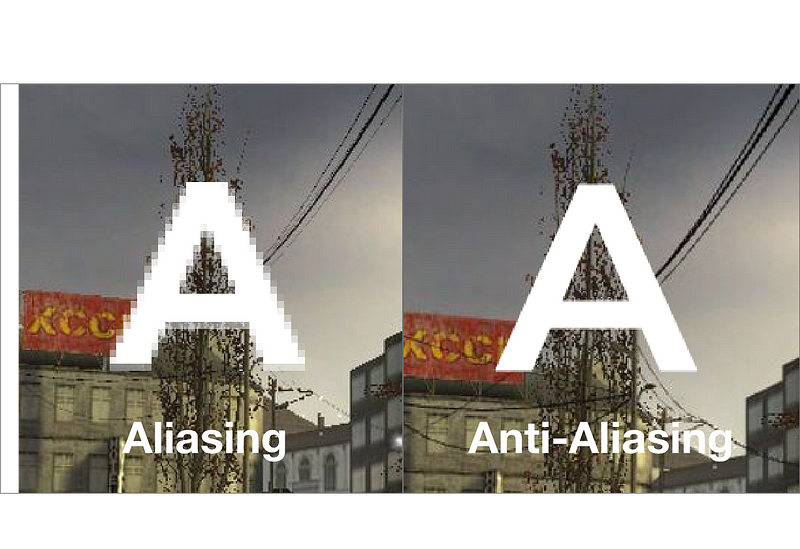Anti Aliasing Image Tensor
Anti Aliasing Image Tensor
Easy:
Alright, let’s imagine you have a box of crayons and you’re drawing a picture on your coloring book. Now, if you look closely at the lines in the coloring book, they might not be perfectly straight or smooth because printers can only print so many dots per inch (DPI). This means that when you draw along these lines, sometimes your crayon strokes don’t match up perfectly with the printed lines, making your drawing look a bit jagged or rough.
Antialiasing is like having a magic crayon that helps make those jagged edges smoother. Imagine if instead of just following the printed lines, your crayon could slightly blend into the white space around it, filling in any gaps and smoothing out the edges. That’s what antialiasing does with images on screens — it makes the edges between different colors or objects look smoother and less jagged, even though the screen itself is made up of tiny pixels that can’t display perfect smoothness.
In the world of computer graphics, this “magic” is achieved through algorithms that analyze how colors change from one pixel to another and then adjust the color values of individual pixels to create a smoother transition. It’s like giving your drawing a special coat of polish that makes it look more finished and beautiful.

Moderate:
Antialiasing Image Tensor refers to a technique used in computer graphics and image processing to reduce the appearance of jagged edges or “aliasing” artifacts in digital images. Let’s break it down:
- Image Tensor:
An image tensor is a mathematical representation of an image. It is a multi-dimensional array that stores the pixel values of an image. In the context of computer vision and deep learning, images are often represented as tensors.
For example, a color image tensor typically has three dimensions: height, width, and color channels (e.g., RGB). Each element in the tensor corresponds to a pixel value at a specific location and color channel. - Aliasing:
Aliasing refers to the visual artifacts that appear in digital images when high-frequency details are not properly sampled or reconstructed. These artifacts manifest as jagged edges, staircase effects, or moiré patterns.
Aliasing occurs because digital images are discrete representations of continuous signals. When an image is sampled or resized, the high-frequency information may not be captured accurately, leading to aliasing artifacts. - Antialiasing:
Antialiasing is a technique used to mitigate the effects of aliasing and improve the visual quality of digital images. It involves smoothing the edges and reducing the appearance of jagged artifacts.
There are various antialiasing techniques, but a common approach is to apply a low-pass filter to the image before sampling or resizing. This filter blurs the high-frequency details and helps to smooth out the edges.
In the context of image tensors, antialiasing can be applied during image preprocessing or when performing operations like resizing or transforming the image tensor. - Antialiasing Image Tensor:
Antialiasing Image Tensor refers to the application of antialiasing techniques to an image tensor. It involves applying appropriate filters or interpolation methods to the tensor data to reduce aliasing artifacts and improve the visual quality of the image.
This can be done using various libraries or frameworks in computer vision and deep learning, such as OpenCV, PIL (Python Imaging Library), or TensorFlow. These libraries provide functions or methods to perform antialiasing operations on image tensors.
By applying antialiasing to an image tensor, the resulting image will have smoother edges, reduced jaggedness, and improved overall visual quality. This is particularly important when resizing or transforming images, as these operations can introduce aliasing artifacts if not handled properly.
In summary, Antialiasing Image Tensor refers to the process of applying antialiasing techniques to an image represented as a multi-dimensional array (tensor) in order to reduce aliasing artifacts and improve the visual quality of the image.

Hard:
An antialiasing image tensor is a mathematical representation of a technique used to reduce aliasing artifacts in digital images. Aliasing occurs when a digital image is sampled at a rate lower than the Nyquist rate, resulting in jagged or stair-stepped edges.
An image tensor is a mathematical object that represents a 2D image as a set of spatial derivatives. In the context of antialiasing, an image tensor is used to model the edges and textures present in an image.
Antialiasing algorithms, such as those based on the Lanczos or Bicubic resampling methods, use the image tensor to estimate the missing high-frequency components of the image. This is done by applying a set of filters to the image, which are designed to capture the characteristics of the edges and textures present in the image.
The antialiasing image tensor is typically represented as a 2D array of values, where each value represents the amplitude and orientation of a specific spatial frequency component of the image. The tensor is often represented in a coordinate system, where the x-axis and y-axis represent the spatial coordinates of the image, and the z-axis represents the frequency content of the image.
The antialiasing algorithm uses the image tensor to estimate the missing high-frequency components of the image by applying a set of filters to the tensor. These filters are designed to capture the characteristics of the edges and textures present in the image, and are typically implemented using a combination of convolutional and Fourier transform operations.
The output of the antialiasing algorithm is a filtered image tensor, which is then used to reconstruct the final, antialiased image. The antialiased image is typically represented as a 2D array of pixel values, where each pixel value represents the intensity of the image at that location.
In summary, an antialiasing image tensor is a mathematical representation of an image that captures its spatial frequency content and is used by antialiasing algorithms to estimate the missing high-frequency components of the image and produce a smooth, high-quality image.

Comments
Post a Comment